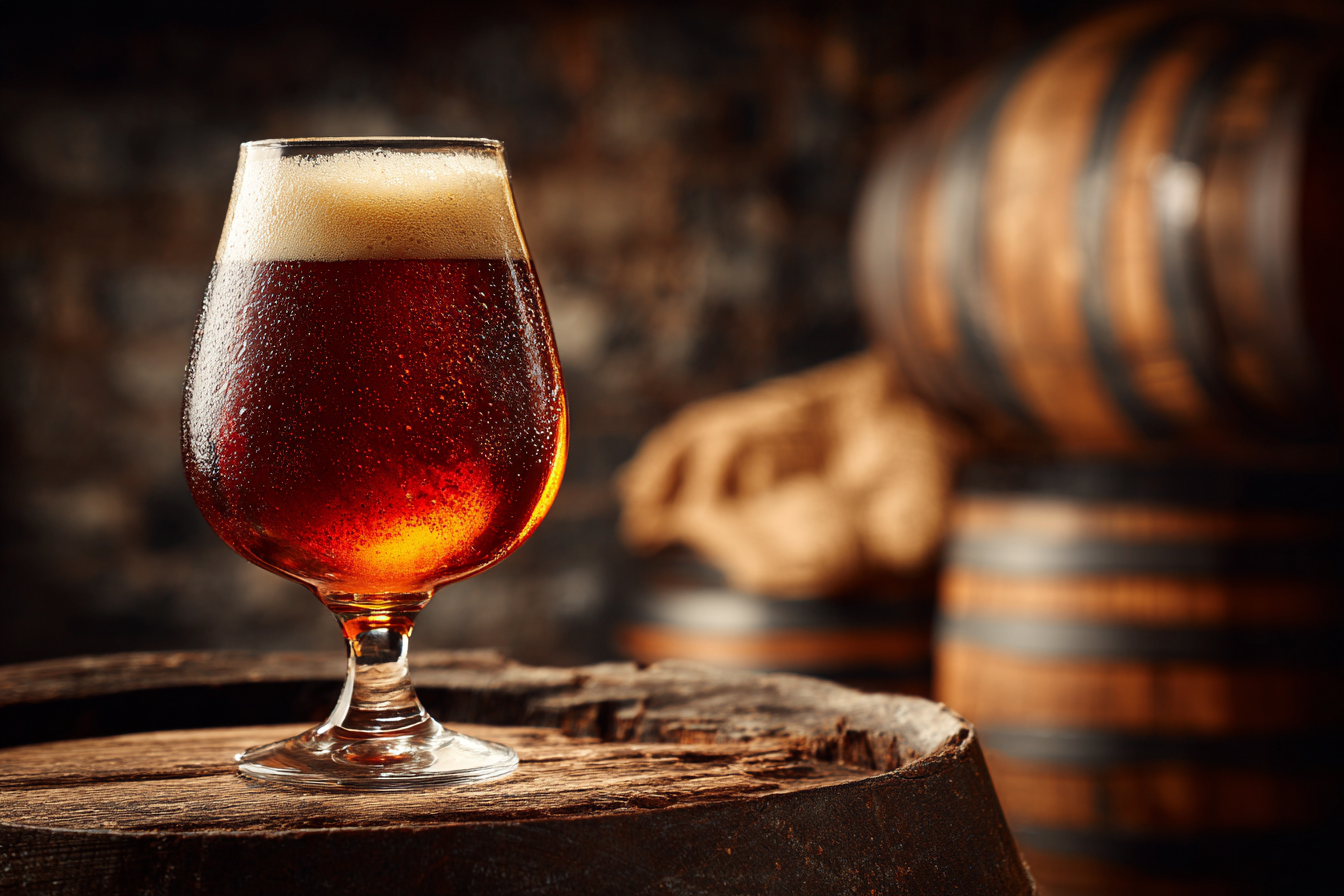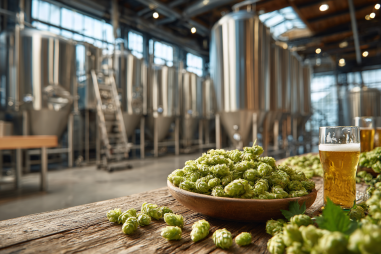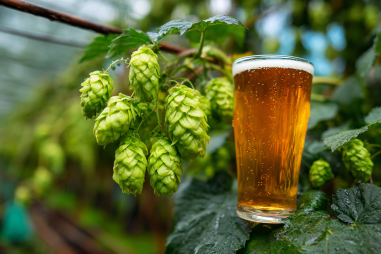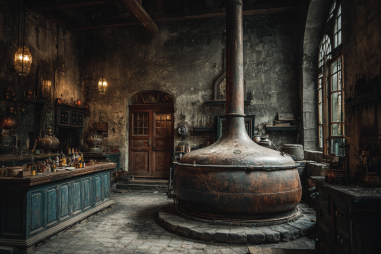Barrel-aged barleywine is a marvel in the world of craft beer, celebrated for its rich complexity and remarkable depth. For those seeking a rich, full-bodied brew with layers of intricate flavors, barrel-aged barleywine offers a sensory journey like no other. This style of beer, matured in wooden barrels, brings out unique characteristics that evolve over time, transforming the taste from straightforward malt sweetness to a symphony of caramel, vanilla, oak, and more. Let’s delve into the essence of barrel-aged barleywine and uncover what makes its flavor profile so special.
Understanding Barrel-Aged Barleywine
Barleywine is a strong ale known for its high alcohol content and robust malt backbone. It is a classic style that has been celebrated among beer enthusiasts for its intense flavors and warming qualities. When barleywine is barrel-aged, it means the beer has been matured inside wooden casks—often previously used for aging spirits like bourbon, whiskey, or wine. This aging process introduces new layers of flavor, influenced by the wood and residual spirit left in the barrels.
This maturation adds complexity and depth, making barrel-aged barleywine a prized choice for adventurous palates. The resulting beer is much more than just a strong ale; it’s a nuanced and evolving sensory experience that can develop over months or even years in the barrel.
The Basic Flavor Profile of Barleywine
Before diving into how barrel aging influences barleywine, it’s important to understand the basics of its flavor profile. Barleywine is renowned for its:
- Malty Sweetness: The foundational flavor is often intensely malty, with a sweetness that can range from caramel to toffee.
- Fruitiness: Many barleywines have fruit-like esters, hinting at flavors such as dark fruits, raisins, or dried figs.
- Alcohol Warmth: With alcohol content typically between 8-12%, barleywine delivers a warming sensation that complements its richness.
- Bitter Balance: A good barleywine balances malt sweetness with a firm bitterness from hops, often showcasing pine, citrus, or earthy notes.
These components build a robust foundation that sets the stage for the transformative effects of barrel aging.
The Impact of Wooden Barrels on Flavor
Wooden barrels do more than just hold the beer—they actively shape the flavor. The type of barrel used and its history are critical to the beer’s final character. Many producers opt for barrels that previously held bourbon, whiskey, or wine due to the rich array of flavors these woods impart.
Here’s how barrels influence barleywine’s flavor profile:
- Wood and Oak: The oak staves infuse the beer with notes of vanilla, toast, and sometimes a smoky character depending on the barrel’s treatment.
- Spirit Soak: Barrels used for aging spirits often carry residual flavors—bourbon barrels might add hints of caramel, charred sugar, and warm spices to the beer.
- Micro-oxidation: The porous nature of wood allows tiny amounts of oxygen to interact with the beer, softening harsh edges and developing more complex aromas.
- Tannins: Derived from the wood, tannins provide a subtle dryness and structure, similar to what is found in barrel-aged wines.
The interaction between the beer and barrel creates a river of dynamic flavors, creating a multi-sensory drinking experience that evolves with each sip.
Common Tasting Notes in Barrel-Aged Barleywine
When tasting barrel-aged barleywine, you can expect a rich tapestry of flavors that reflect both the original beer and the influence of wood aging. Some of the most common tasting notes include:
- Caramel and Toffee: These sweet, rich flavors come both from the malts and the barrel aging, often deepened with a molasses-like quality.
- Vanilla: A signature note imparted by oak barrels, vanilla gives a smooth, sweet aroma that complements the malt character.
- Oak and Woodiness: The underlying barrel influence provides a dry, woody backbone that adds complexity.
- Dark Fruits: Expect hints of raisins, figs, or cherries, often intensified by aging.
- Spices and Toast: Subtle spiced aromas like clove or cinnamon can emerge, along with toasted wood and char from the barrel.
- Alcohol Warmth: The elevated alcohol is more integrated and smooth due to time in the barrel, offering a pleasant warming finish without harshness.
These flavor notes combine to give barrel-aged barleywine its layered, indulgent character.
How Aging Time Influences Taste
The length of time that barleywine spends in the barrel substantially alters the flavor. As a general rule, the longer the aging, the more pronounced the barrel characteristics become, but this is not always linear. Here’s what happens over time:
- Short Aging (a few months): The beer picks up subtle hints of oak and vanilla without overwhelming the malt profile.
- Medium Aging (6-12 months): Barrel notes intensify. You’ll start to notice fuller caramel, toasted wood, and some complexity from spirit residues.
- Long Aging (over a year): Deep woody tannins, rich dark fruit flavors, and smooth alcohol melding occur. The beer becomes more mellow, with some oxidative notes that can add character akin to aged wine or whiskey.
It’s important for brewers to carefully monitor the aging process to achieve the desired flavor balance without tipping into over-oaked or overly oxidized territory.
Pairing Barrel-Aged Barleywine with Food
The beautiful thing about barrel-aged barleywine is that its bold flavors pair well with a variety of foods, making it an excellent choice for thoughtful pairings. Here are some pairing ideas:
- Rich Meats: Think roasted beef, lamb, or game meats. The beer’s sweetness and warmth can cut through the richness beautifully.
- Strong Cheeses: Blue cheese, aged cheddar, or gouda match the beer’s complexity and sweetness.
- Chocolate Desserts: Dark chocolate or caramel desserts harmonize with the toffee and vanilla notes in the beer.
- Spiced Foods: Foods with cinnamon, clove, or nutmeg are enhanced by the subtle spice and oak in the beer.
When choosing a pairing, aim to complement or contrast the flavors for a balanced and enjoyable tasting experience.
Tips for Tasting and Appreciating Barrel-Aged Barleywine
Tasting barrel-aged barleywine is a sensory adventure that benefits from a bit of mindfulness. Here are some tips to get the most out of your tasting experience:
- Choose the Right Glassware: Use a tulip-shaped or snifter glass to concentrate aromas and let the flavors shine.
- Pour Slowly: Pour gently to avoid disturbing sediment and to appreciate the beer’s colors and carbonation.
- Observe the Appearance: Notice the deep amber or mahogany color and the creamy head.
- Smell Deeply: Inhale slowly to pick out vanilla, oak, fruit, and caramel notes.
- Taste Mindfully: Take small sips, allowing the beer to linger on your palate to experience evolving flavors.
- Note the Finish: Pay attention to the warming alcohol, oak tannins, and balancing bitterness as the beer finishes.
By slowing down and engaging all your senses, you’ll come to appreciate the intricate nuances that make barrel-aged barleywine so special.
Why the Flavor Profile of Barrel-Aged Barleywine Matters
Understanding the flavor profile of barrel-aged barleywine enriches the drinking experience, transforming it from mere consumption into a journey. It allows drinkers to appreciate the craftsmanship involved in balancing malt sweetness, hop bitterness, alcohol warmth, and barrel influence. For brewers, it’s an opportunity to experiment with aging techniques and barrel types, crafting beers with layered depth and character.
Ultimately, exploring barrel-aged barleywine’s flavor profile highlights why this beer style remains beloved—its ability to surprise and delight with every sip, embodying a fusion of tradition, innovation, and artistry. Whether a seasoned beer enthusiast or a curious newcomer, discovering the flavors hidden in a barrel-aged barleywine is a rewarding adventure.







